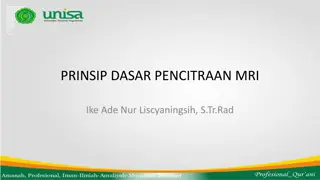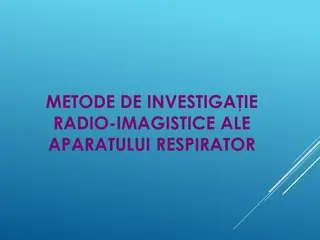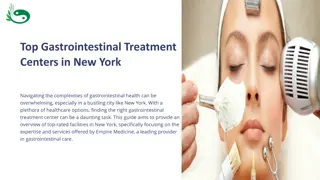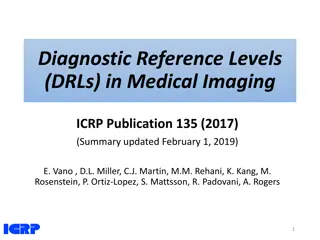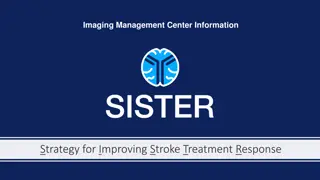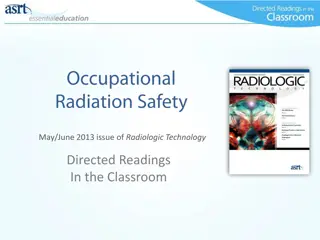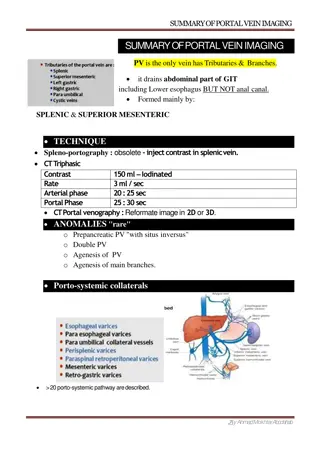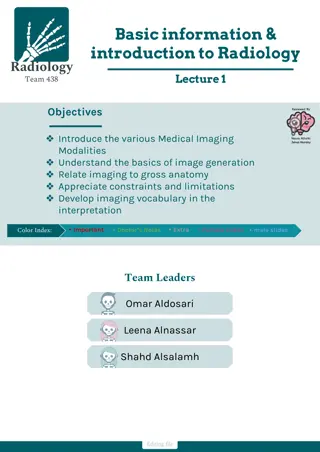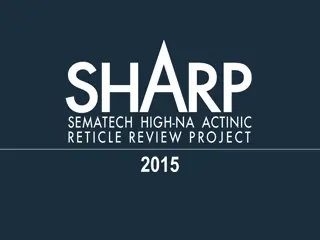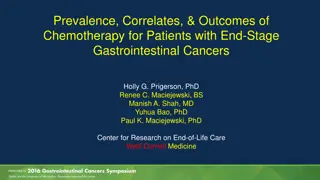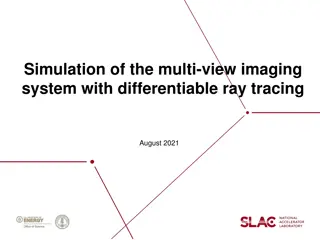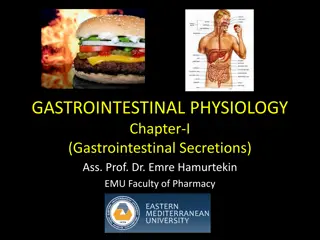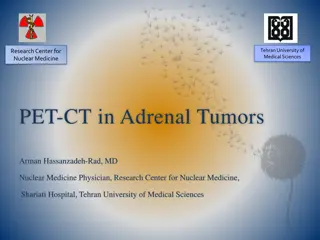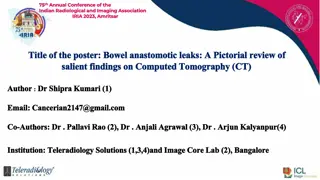
Recent Advances in Gastrointestinal Imaging and Clinical Radiology
Explore the latest developments in gastrointestinal imaging and clinical radiology, including the use of magnetic resonance enterography and computed tomography enterography in Crohn's disease follow-up, the impact of social distancing on pediatric idiopathic intussusception rates during the COVID-19 pandemic, the resurgence of intestinal ascariasis among adults, and a comparison of MRI appendix biometrics in children with and without acute appendicitis.
Download Presentation

Please find below an Image/Link to download the presentation.
The content on the website is provided AS IS for your information and personal use only. It may not be sold, licensed, or shared on other websites without obtaining consent from the author. If you encounter any issues during the download, it is possible that the publisher has removed the file from their server.
You are allowed to download the files provided on this website for personal or commercial use, subject to the condition that they are used lawfully. All files are the property of their respective owners.
The content on the website is provided AS IS for your information and personal use only. It may not be sold, licensed, or shared on other websites without obtaining consent from the author.
E N D
Presentation Transcript
Dane Eskildsen DO Baylor College of Medicine
WHATS NEW IN: Gastrointestinal Imaging Reviewed By: Vincent Mellnick, Senior Editor Alice Fung, Senior Editor Dane Eskildsen DO, Junior Editor Richard Fagan MD, Junior Editor
Is the Mixed Use of Magnetic Resonance Enterography and Computed Tomography Enterography Adequate for Routine Periodic Follow-Up of Bowel Inflammation in Patients with Crohn's Disease? Ha J, Park SH, Son JH, et al. Is the Mixed Use of Magnetic Resonance Enterography and Computed Tomography Enterography Adequate for Routine Periodic Follow-Up of Bowel Inflammation in Patients with Crohn's Disease?. Korean J Radiol. 2022;23(1):30-41. CTE and MRE is used for follow up of Chron's disease (CD) Can you mix them? CD patients with previous CTE and MRE or MRE alone selected CD inflammation: Unchanged, decreased, increased. MRE alone superior to mixed use of CTE/MRE
The impact of social distancing during the COVID-19 pandemic on rates of pediatric idiopathic intussusception Handa, A., Callahan, M.J., Kawai, K. et al. The impact of social distancing during the COVID-19 pandemic on rates of pediatric idiopathic intussusception. Pediatr Radiol 52, 453 459 (2022). Infection linked to ileocolic intussusception Social distancing during COVID pandemic -> decreased infection transmission Does this correlate with a decrease in intussusception? Evaluated rates of intussusception and HPS (neg control) pre pandemic vs. During pandemic 72% decrease in rates of ileocolic intussusception. No change in HPS.
Resurgence of intestinal ascariasis among adults: radiological diagnosis and clinical implications Ghahremani, G.G., Hahn, M.E. Resurgence of intestinal ascariasis among adults: radiological diagnosis and clinical implications. Abdom Radiol 47, 915 922 (2022). Ascariasis has had a resurgence in the US in recent years 12 patients with ascariasis on imaging CT/Small bowel series: Tubular filling defect MR enterography: hypointense worms within bowel lumen Worms ingest contrast --> Intestinal tract opacification CT/small bowel series preferred over MR enterography
Comparison of MRI appendix biometrics in children with and without acute appendicitis Tung, E.L., Baird, G.L., Ayyala, R.S. et al. Comparison of MRI appendix biometrics in children with and without acute appendicitis. Eur Radiol 32, 1024 1033 (2022). MRI comparable to CT for appendicitis, but rarely used. No MRI specific diagnostic criteria Biometric values for appendicitis vs without appendicitis: Wall thickness - 2.6 mm vs 1.7 mm, Diameter - 10.4 mm vs. 5.8 mm Qualitative biometrics - peri-appendiceal fatty edema, ability to distinguish wall intensity from lumen intensity were found to be the best indicators for positive cases of appendicitis on MRI
Evaluating suspected small bowel obstruction with the water- soluble contrast challenge Lawrence EM, Pickhardt PJ. Evaluating suspected small bowel obstruction with the water-soluble contrast challenge. Br J Radiol 2021; 95: 20210791. Water soluble challenge (WSC) can determine need for surgery in SBO What is it? Give contrast --> Evaluate transit after 24 hours No transit to colon = failed. Transit to colon = passed Possible therapeutic value Use of WSC challenge in special populations Possibility of CT based WSC challenge
@ACOREdu @ACOREdu @ACOREdu w w w . a c o r e d u . c o m


